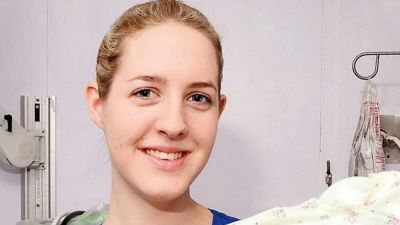Baby's liver damage could not be caused by 'forceful CPR', Lucy Letby murder trial told

A murder trial has heard how “Forceful CPR” could not explain liver damage suffered by a baby allegedly killed by nurse Lucy Letby.
Letby is said to have attacked the newborn baby at the Countess of Chester Hospital's neo-natal unit on 23 June 2016 after she returned from a holiday to Ibiza.
Child O, who was a triplet, is alleged to have been one of 17 babies the 33-year-old targeted between June 2015 and June 2016.
Jurors at Manchester Crown Court has heard how Child O was born in good condition until he collapsed two days later in the care of Letby and became progressively worse as medics failed to revive him.
Dr Andreas Marnerides, a Paediatric pathology expert, told jurors he concluded Child O died because of a “inflicted traumatic injury” to the liver and receiving fatal injections of air into the stomach and bloodstream.
Dr Marnerides said likened the liver injuries to those suffered fatally by children involved in road traffic accidents and non-accidental assaults.
During cross examination on Thursday 30 March, Ben Myers KC, said: “Can you assist with how little force could be involved?”
The consultant at London’s St Thomas’ Hospital said: “I think there is no way of measuring a force in a baby because we don’t conduct such experiments on babies.
"I have never seen this type of injury in the context of CPR so I would say the force required would be of the magnitude of that generated by a baby jumping on a trampoline and falling.
”He agreed that smaller internal bruising to the liver sustained by Child O’s triplet brother Child P – who Letby is alleged to have murdered the next day – could be capable of being caused by CPR."
When asked if “rigorous” chest compressions could be the cause of the internal bruising in Child O, Dr Marnerides said: “I don’t think so, no.
“This is a huge area of bruising for a liver of this size. This is not something you see in CPR.”
Mr Myers said: “So you don’t accept the proposition that forceful CPR could cause this injury in general terms, do you agree it cannot be categorically excluded as a possibility?”
Dr Marnerides replied: “We are not discussing possibilities here, we are discussing probabilities.
"When you refer to possibilities, I am thinking for example of somebody walking in the middle of the Sahara desert found dead with a pot and head trauma.
“It is possible the pot fell from the air from a helicopter. The question is ‘is it probable?’ and I don’t think we can say it is probable.”
Mr Myers asked: “Is it possible in your opinion for at least some of what we see in the damage to the liver arising from the insertion of a cannula?”
The consultant said: “I would consider it extremely unlikely. I would expect some kind of perforation injury.”
Dr Marnerides said the most likely explanation for the death of Child P was excessive air injected via a nasogastric tube - a type of feeding tube used in decompression of the stomach where there is intestinal obstruction - into his stomach.
Letby, originally from Hereford, denies the murders of seven babies and the attempted murder of 10 others.
The trial continues.